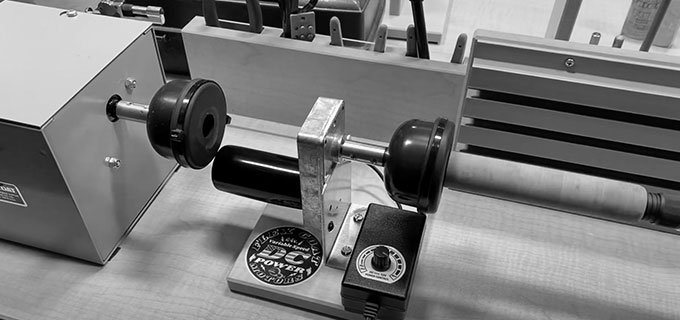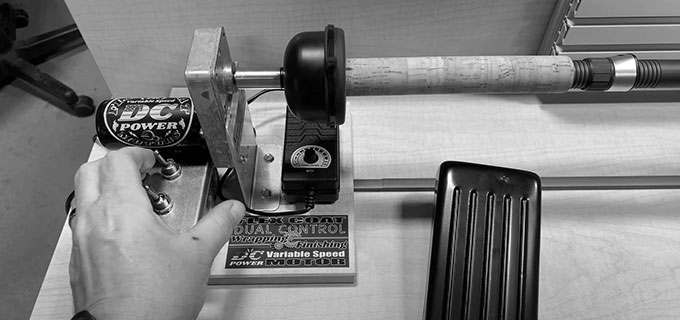This powerful DC gearmotor comes with a variable speed control and off switch, precision manufactured…
Applying Flex Coat Rod Wrapping Finish
Roger Seiders demonstrates how to apply two coats of Flex Coat Rod Wrapping Finish on a 7′ medium lite spinning rod. Working on the FM200 Finishing Machine makes this final step a breeze. With features like a sliding hand rest tray, free spinning roller supports, self-adjusting chuck, slip clutch, and 200 rpm USA made motor you can finish like the pros. The FM200 can be purchased directly or thru one of our many dealers.




Can Flex Cote epoxy finish be cleaned with alcohol? If so which formula is best?
Thank you, jack
If you are referring to uncured epoxy, Denatured Alcohol works great. If you want to clean the surface of cured Flex Coat Finish then we recommend a citrus based cleanser. It will get the surface squeaky clean and free of oils and silicone without the harshness of solvents.
I would like to refinish an old rod that has an orange peel finish.
How do I prep the rod prior the final flex coat finish.
Steven, I would think about stripping the guides off and re-wrapping them versus just top coating the guide wraps. If you just top coat, then you will have to think about preparing the surface for the new Flex Coat. Obviously the surface should be cleaned, but the “orange peel” finish should be addressed. Depending how rough it is you might consider smoothing it out with a 200 grit sand paper. Take care not to scratch the guides, blank, or anything else that will not be re-coated. All this could honestly be as much or slightly less work than just stripping the rod and re-wrapping the guides. This would allow you to really take control of the rod re-boot. Using a sharp knife and being very careful, start at the base of the guidefoot and carve the wrap and old finish off and pull off the guide. Then peal the finish and thread wrap off the rod. To finish this up, carefully carve and shave all the old finish off the blank, being careful not to cut the blank. Take your time. Then wrap the old guides back on, or use new guides. Apply new Flex Coat finish and you are done. If you want to call an talk about this please do, 512-858-7742, ask for John.
About what temp do you run the heat gun?
I am adding abalone inlays by MicroFlex on a rod build. Is there a different (or primer) epoxy finish I should use to avoid the “orange-peel” effect?
Also, what goes on top of thread color preservative, to avoid weak and/or non-adherance of rod wrapping finish?
No primer needed. Just make sure that the surface to be coated is clean and free of oils.
Our heat gun has a high and low setting, we normally use the high setting.
What would you recommend to use as a rod blank finish, while using flex coat as the thread wrap finish?
To coat the whole blank you can use a clear spray coating from the spray paint section of the hardware store. Make sure it is rated to coat plastic which means its flexible and will adhere well. Krylon makes a good product.
how long between coats on guide wraps?
Great question, you can re-coat in 6 to 8 hours or when the first coat is cured to the touch. Keep your mixing cup to determine this without touching your rod.
? i started to finish my rod on the second coat the finish did not cure what should i do at this point
If it has been over 24 hours and you can scratch the finish off under your fingernail then it will not cure properly. You will have to clean it off with solvent like Denatured Alcohol or ever Acetone(Be Careful). The good news is that your base coat is set and you can just add a top coat that is properly measured and mixed, which was the problem you likely had. If the finish is set enough that you can’t scratch it off under your nail, then you can top coat that with a properly measured and mixed finish and it should be good. More questions, Call us at 512-858-7742